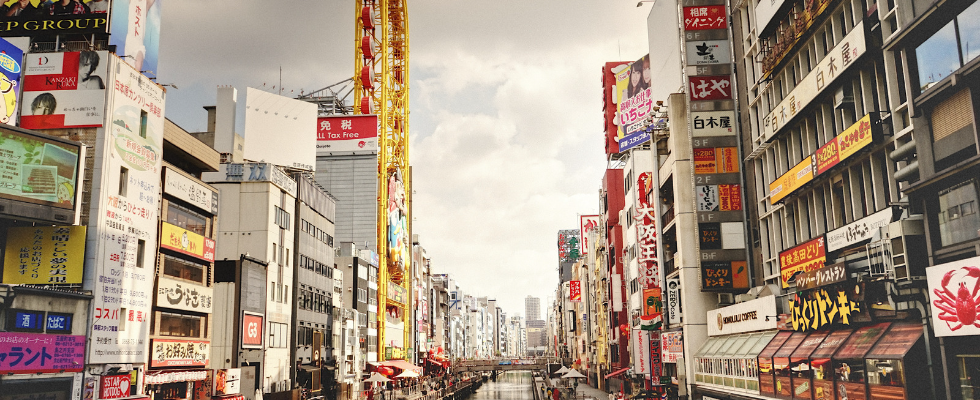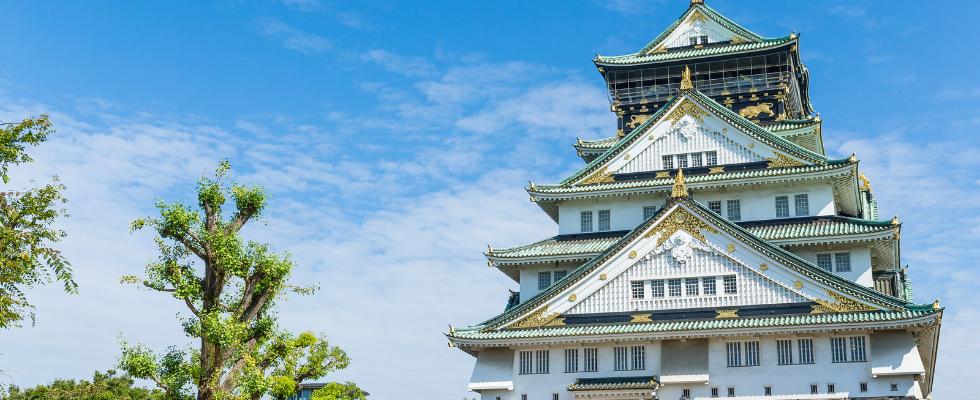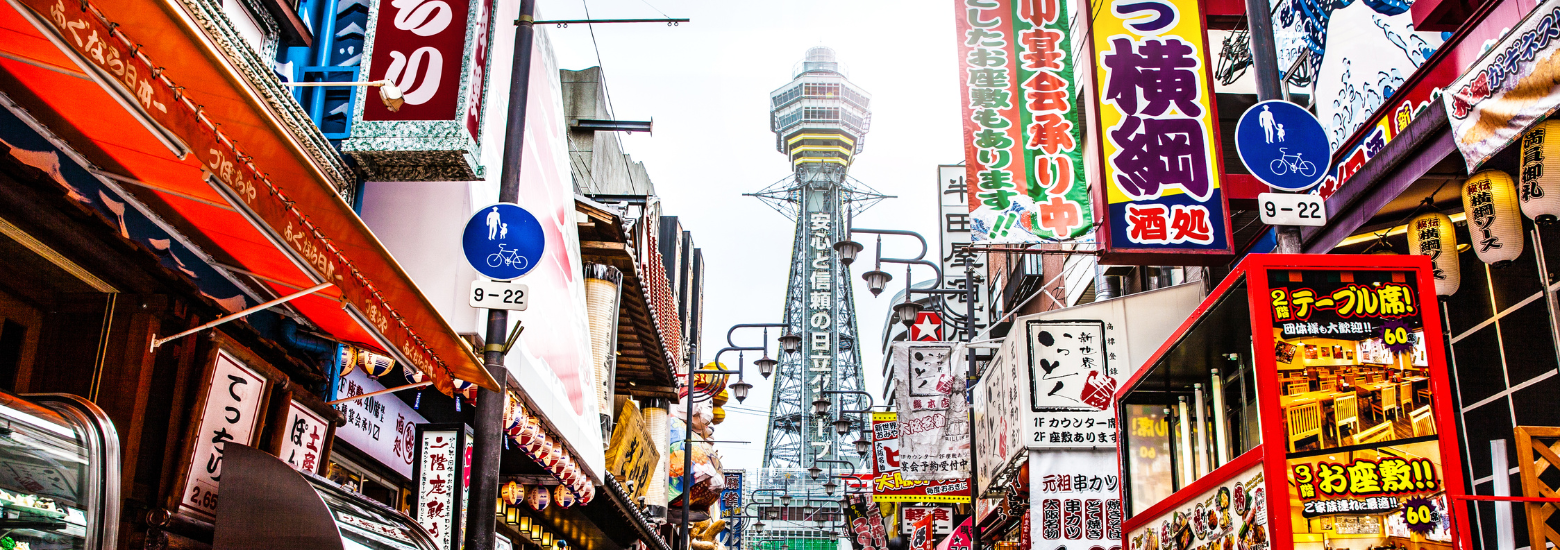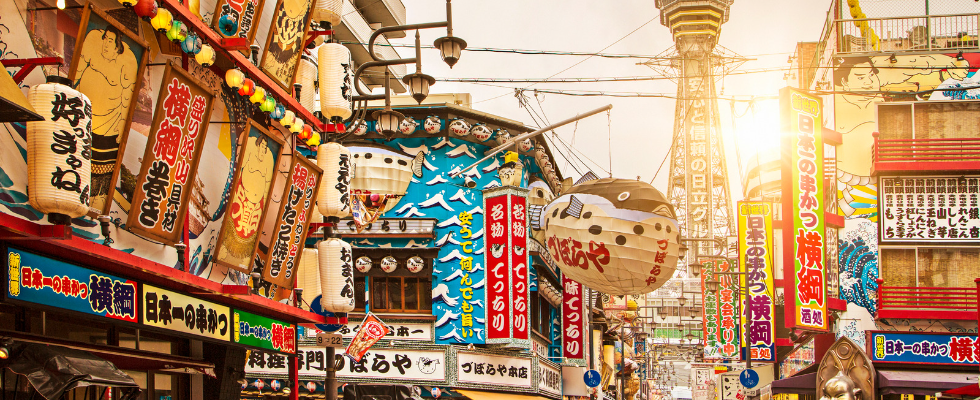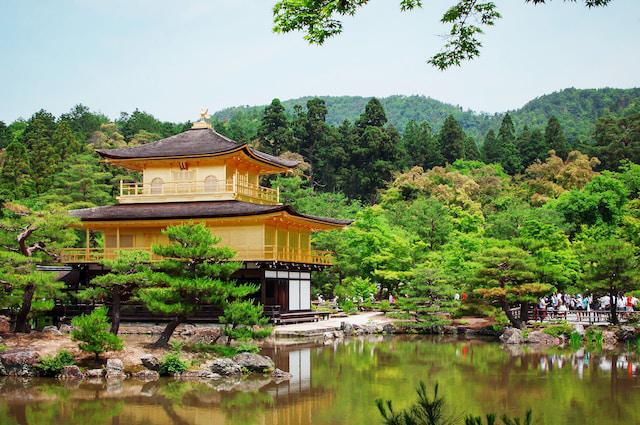The webpage has been idle for too long. To get the latest information, we suggest you refresh the page.
Classic Kansai Four Cities Tale Travel | Explore Kyoto, Osaka, Kobe, Nara, Elegant Snow White Himeji Castle, Historic Garden Aesthetics, Five Days around Lake Biwa | Stay Two Nights in a Five-Star Acc
Embark on a five-day journey through the classic tales of Kansai, visiting Kyoto, Osaka, Kobe, Nara, and the elegant white Himeji Castle. Explore traditional culture in Kyoto, savor authentic cuisine in Osaka, and experience the unique charm of Kobe's harbor and renowned beef. Encounter ancient history with friendly deer in Nara and marvel at Himeji Castle's pristine beauty. Conclude the trip by enjoying the scenic views of Lake Biwa and the aesthetic gardens. Immerse yourself in the rich tapestry of Kansai's culture, staying two nights in luxurious five-star accommodations for a seamless blend of Japan's ancient and modern allure.

📍Sights

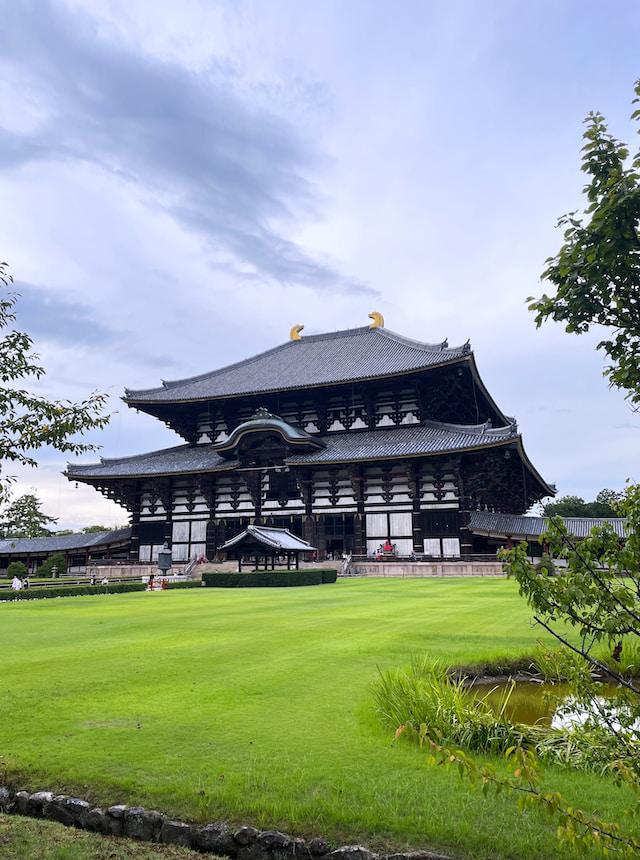
Nara Deer Park & Todai-ji Temple
Located in Nara's Tōdai-ji Temple, it was established during Japan's Nara period as a Buddhist undertaking. In the mid-8th century, it was constructed with the nationwide support of Emperor Shōmu, a devout follower of Buddhism, and held the position of the head temple among more than 60 provincial temples of the time. Tōdai-ji has faced destruction multiple times due to wars, fires, and earthquakes. The main structure, the Great Buddha Hall, stands nearly 50 meters tall, making it the world's largest existing wooden building.
The site of Tōdai-ji is also home to Nara Park, known as the Nara Deer Park. The park houses a population of approximately 1,200 wild deer, considered sacred messengers of the gods due to their long history of residing in Nara Park. Consequently, the deer are cherished by the locals, and they exhibit no fear of humans. The combination of the Great Buddha, lush greenery, and deer epitomizes the essence of the ancient capital, Nara.
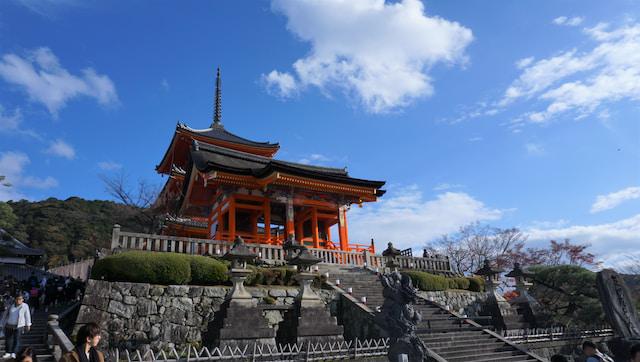
Kiyomizu-dera
Kiyomizu-dera, renowned for its iconic Kiyomizu Stage and its association with romantic destiny, is the oldest temple in Kyoto, Japan. Established in the year 798 AD, it covers an expansive area of 130,000 square meters and is said to have been founded by the first disciple of a Chinese monk, Master Jichu-en. The existing structure of Kiyomizu-dera dates back to its reconstruction in 1633.
The temple is particularly enticing during the cherry blossom season in spring and the vibrant autumn foliage. In front of the main hall stands the famous "Kiyomizu Stage," a suspended platform supported by 139 pillars, each several meters high, intricately woven together without the use of a single nail. The temple's grand and ingeniously constructed buildings create a majestic atmosphere.
The main hall houses an eleven-faced Kannon statue, a representation of the goddess of mercy, which is usually concealed from public view and only revealed once every 33 years. Adjacent to the main hall on the north side is the Jishu Shrine, dedicated to the deity of good matches. This shrine is immensely popular among young people seeking romantic connections, and the atmosphere is lively with earnest prayers for good relationships. Legend has it that walking from the stage to the "love stones" on the shrine's grounds can bring not only health and longevity but also the forging of a fortunate romantic connection.
Kinkaku-ji
Kyoto's most iconic landmark, Kinkaku-ji (Golden Pavilion), has been designated as a national treasure by the Japanese government. In 1994, it was also recognized as a UNESCO World Heritage Site, representing the historical legacy of ancient Kyoto. In the eyes of foreigners, it stands alongside Mount Fuji and geisha as one of Japan's three iconic impressions. The entire exterior of the temple is adorned with gold leaf, and at the top sits a golden phoenix, symbolizing auspiciousness. Kinkaku-ji is not only a visual masterpiece but also an enduring spiritual symbol of Kyoto.
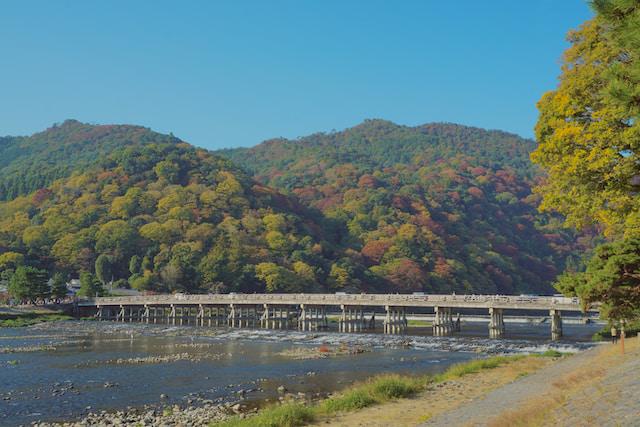
Arashiyama's Togetsukyo
The most representative tourist destination, the "Togetsukyo Bridge" in Arashiyama, is a place of beauty throughout the four seasons—cherry blossoms in spring, lush greenery in summer, maple leaves in autumn, and snow in winter. The average number of visitors remains high, and the Katsura River flows gracefully beneath the bridge, adorned with the shimmering reflections of light, and water birds enhancing the scenery, creating a picturesque paradise! Since the Heian period, Japanese nobles have considered this area as an ideal place for suburban excursions and water-related recreation. The surroundings of the Togetsukyo Bridge boast delightful scenery with green mountains, clear waters, traditional teahouses with red lanterns, and a constant flow of visitors.
*Along the river, one may occasionally encounter elegantly dressed geisha strolling gracefully, creating a nostalgic feeling as if time is flowing backward, with a myriad of enchanting moments.
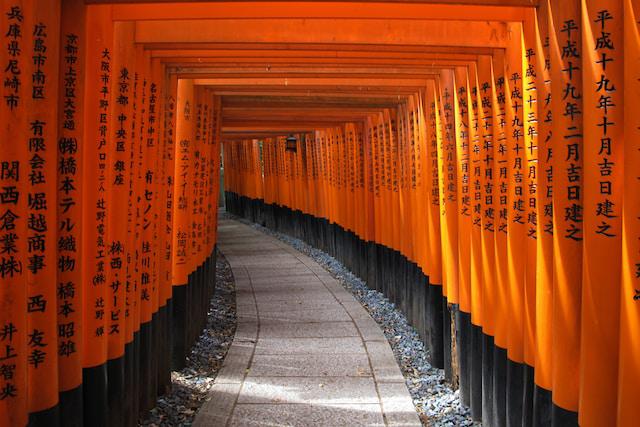
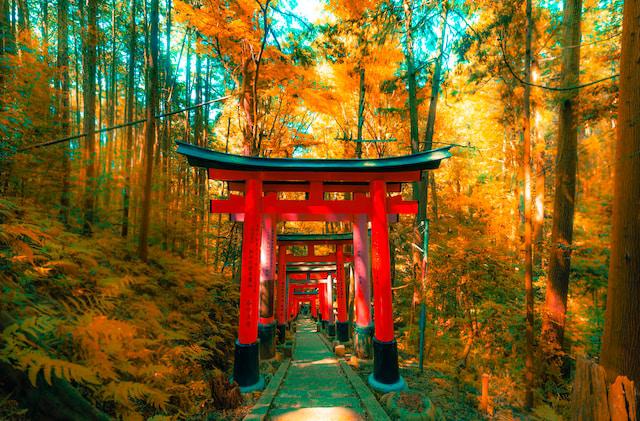
Fushimi Inari Taisha
According to historical records, was first established in the year 711 AD. It serves as the head shrine of the approximately thirty thousand Inari shrines spread across various regions of Japan. The main deity enshrined here is Inari, a Shinto god associated with rice, and has been revered since ancient times as a deity of both agriculture and commerce. It is considered a sacred place where Japanese people pray for the prosperity of businesses and abundant harvests. Located on Inariyama (Inari Mountain), Fushimi Inari Taisha consists of structures such as the main gate, main shrine, and the famous Senbon Torii (thousands of torii gates). Behind the main shrine, there is a mysterious red tunnel seemingly composed of thousands of vermilion torii gates, leading directly to the summit of Inariyama. This unique landscape is one of the representative features of Kyoto.
★Elegant Snow-White: Himeji Castle
With its white walls and winding roof structures resembling a white heron spreading its wings, Himeji Castle is also known as the "White Heron Castle." Construction of the fortress in Himeji began in 1333 by Akamatsu Sadanori. Over the years, successive lords, including Toyotomi Hideyoshi, expanded the castle. Despite experiencing numerous conflicts over its four centuries of existence, Himeji Castle has miraculously avoided destruction. Its exceptional preservation has earned it the title of the "finest castle in Japan."
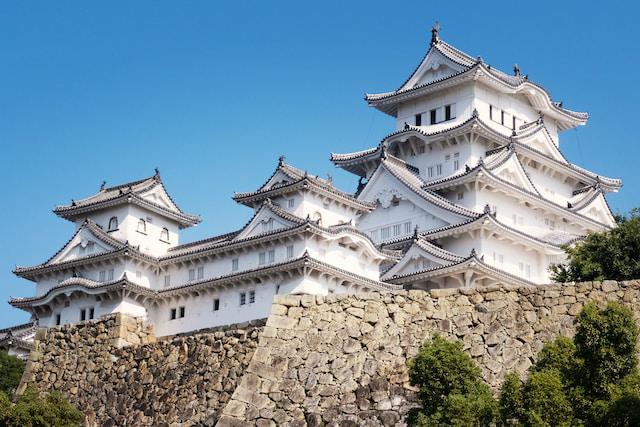
★Himeji Castle's Western Honmaru Palace Garden, known as "Koko-en."
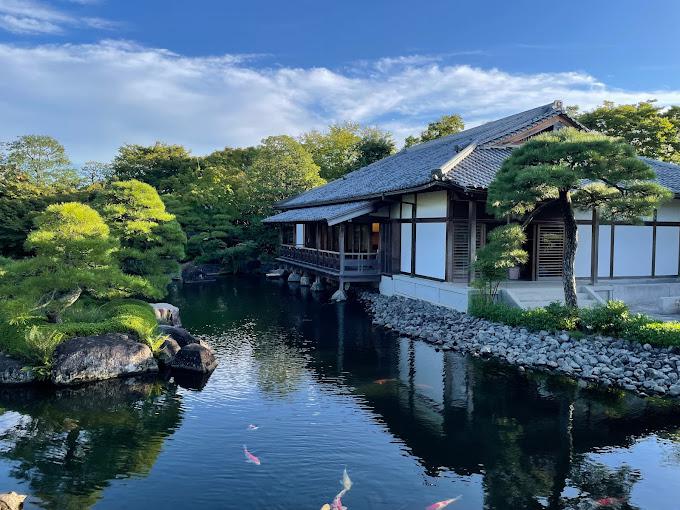
🏠 Stay
★Guaranteed two nights stay at a five-star hotel, providing you with a top-tier luxury experience!★
『Kyoto Hotel Okura』
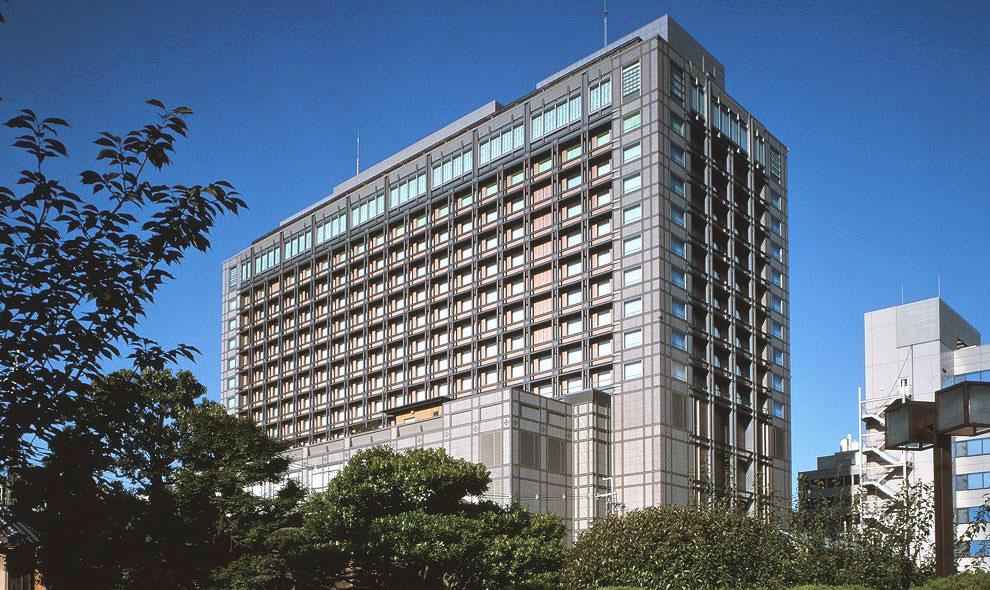
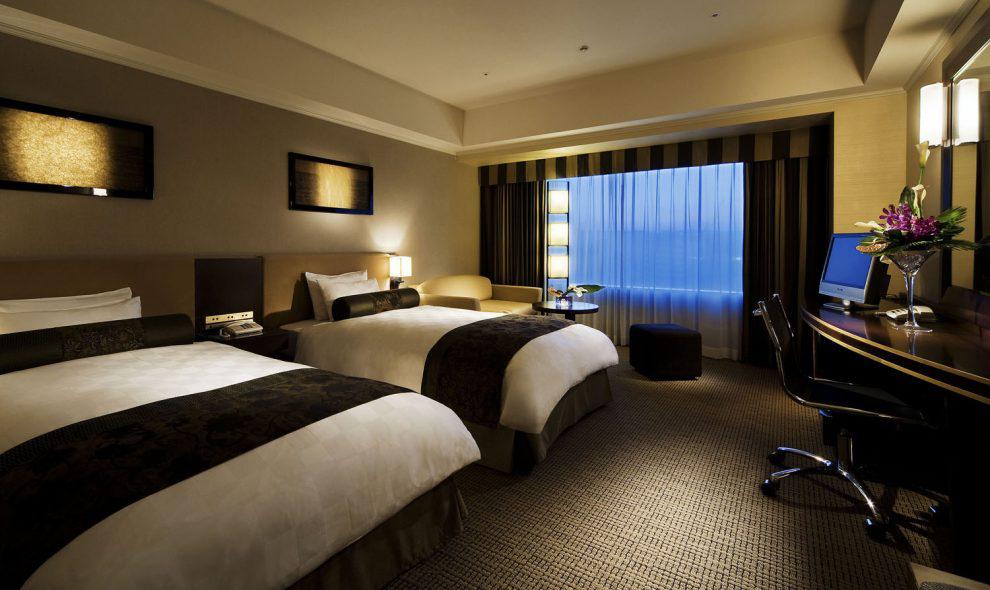
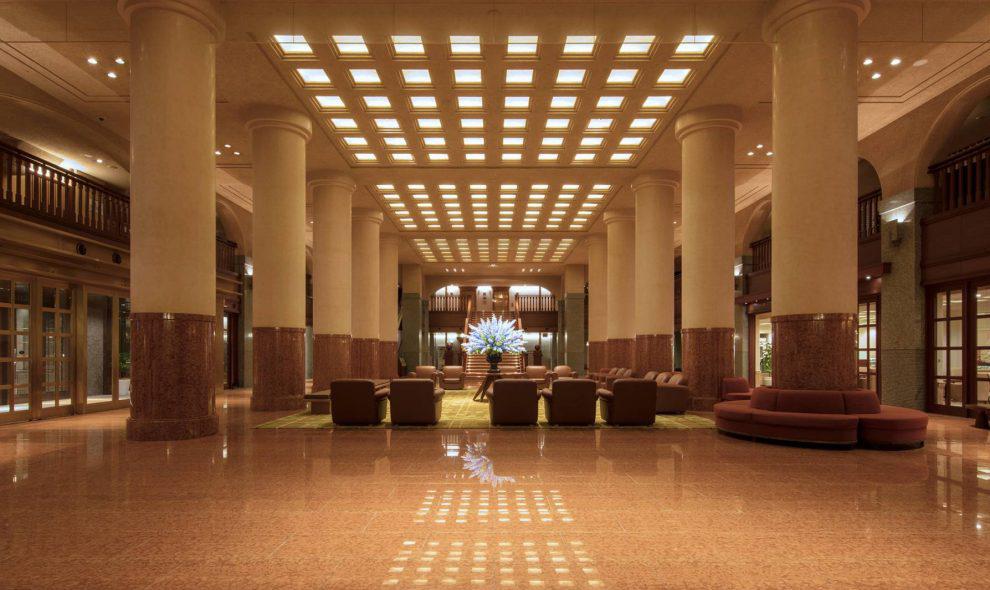
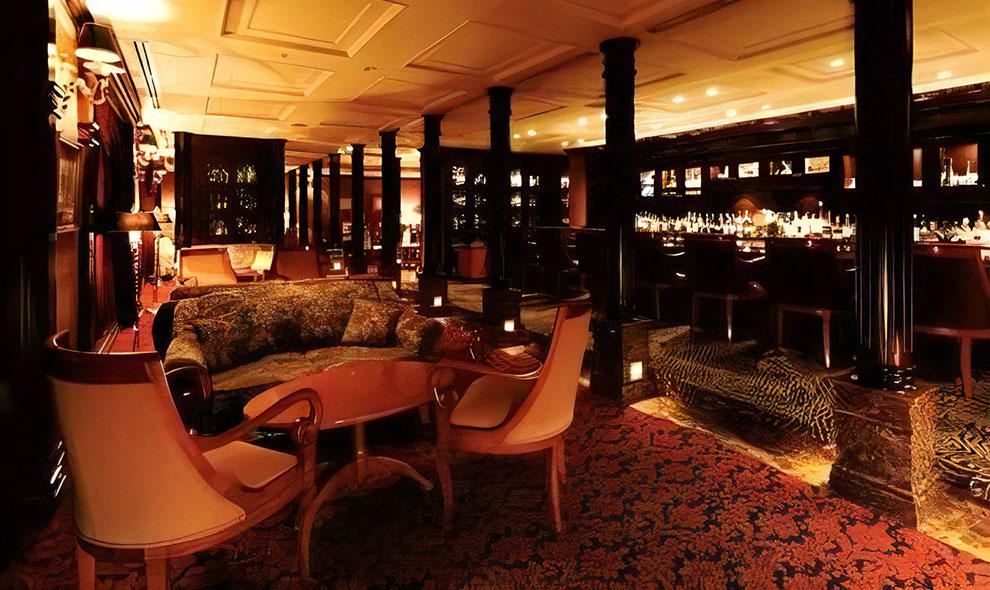
With an elegant and high-quality service that carries the history and traditions of Kyoto, this establishment seamlessly blends Kyoto's charm with European style, creating a classic atmosphere filled with tranquility and freshness.
Enjoy a comfortable space with panoramic views of the beautiful landscapes and streets of Higashiyama, allowing you to indulge in delightful moments.
Surrounded by distinctive Kyoto attractions, this hotel serves as the perfect accommodation for your journey, ensuring your satisfaction.
『Kyoto Granvia Hotel』
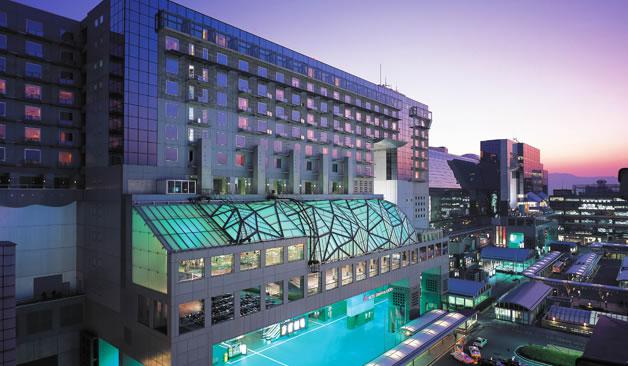


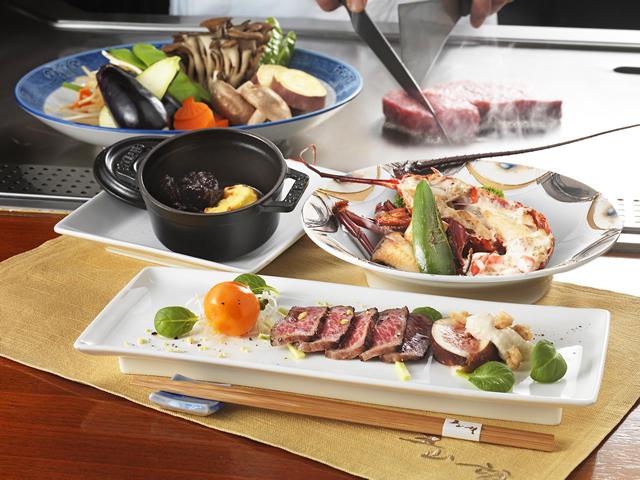
『Hilton Osaka Hotel』
Located just opposite "JR Osaka Station," a 2-minute walk; 1 minute walk from the subway "Umeda Station," with the Airport Limousine bus stop and a 10-minute drive to the new "Osaka Station" for Shinkansen.
The hotel enjoys a prime location, surrounded by many compelling reasons to stay: Umeda Osaka Station City, GRAND FRONT OSAKA, Japan's largest Yodobashi electronics store, the largest underground shopping street, Hilton PLAZA WEST, HERBIS ENT, LUCUA, Mitsukoshi Isetan department store, Hankyu department store, Hanshin department store, HEP Five, Osaka Shiki Theater, Billboard Live, and more, all connected to the hotel, making it a hub for world-class luxury brands and entertainment facilities, gathering all attention in one place.
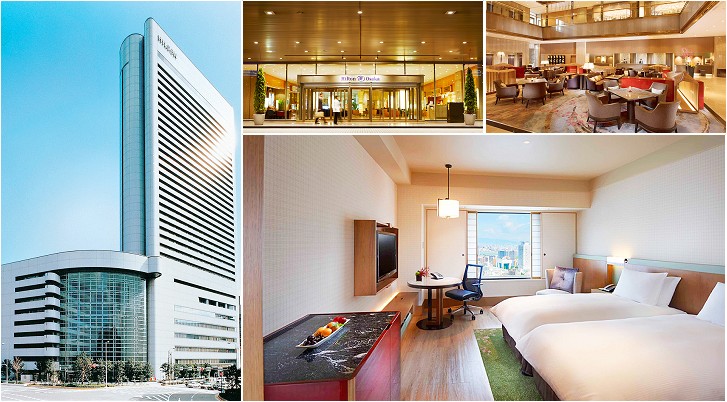
『IMPERIAL HOTEL OSAKA』
Opened on March 15, 1996, the Imperial Hotel Osaka is located in the heart of Osaka, offering a breathtaking view of the beautiful riverside, which is one of Japan's best cherry blossom viewing spots. It is the perfect location for travelers to relax and enjoy comfort.
Inheriting the renowned traditions of the Imperial Hotel Tokyo, which has a history of 123 years, the Imperial Hotel Osaka provides a distinctive Japanese hospitality style, dedicating itself to ensuring the most pleasant accommodation experience for you.
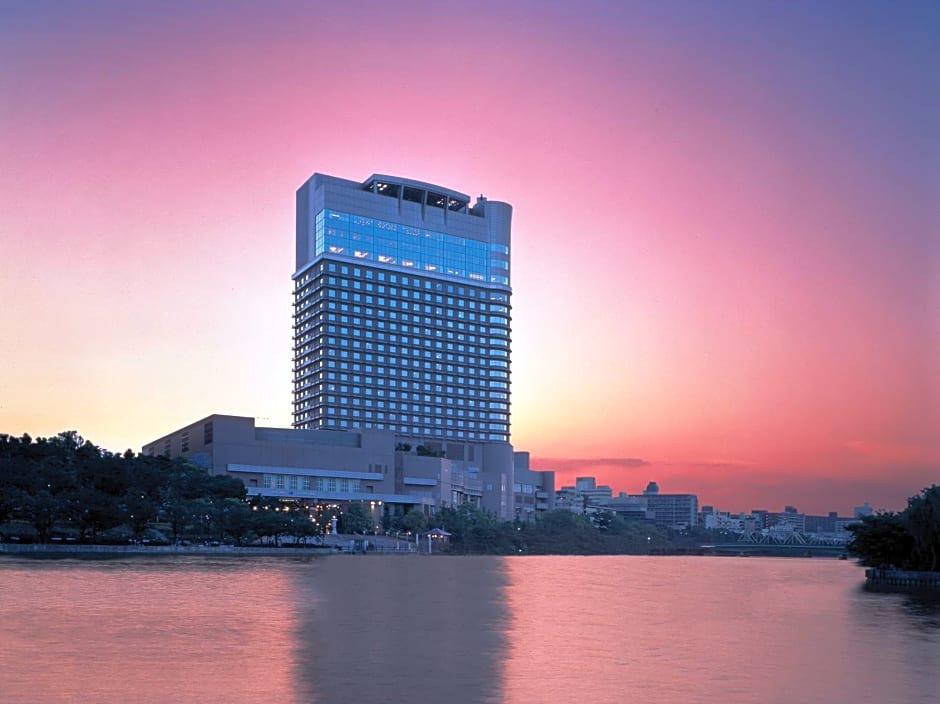
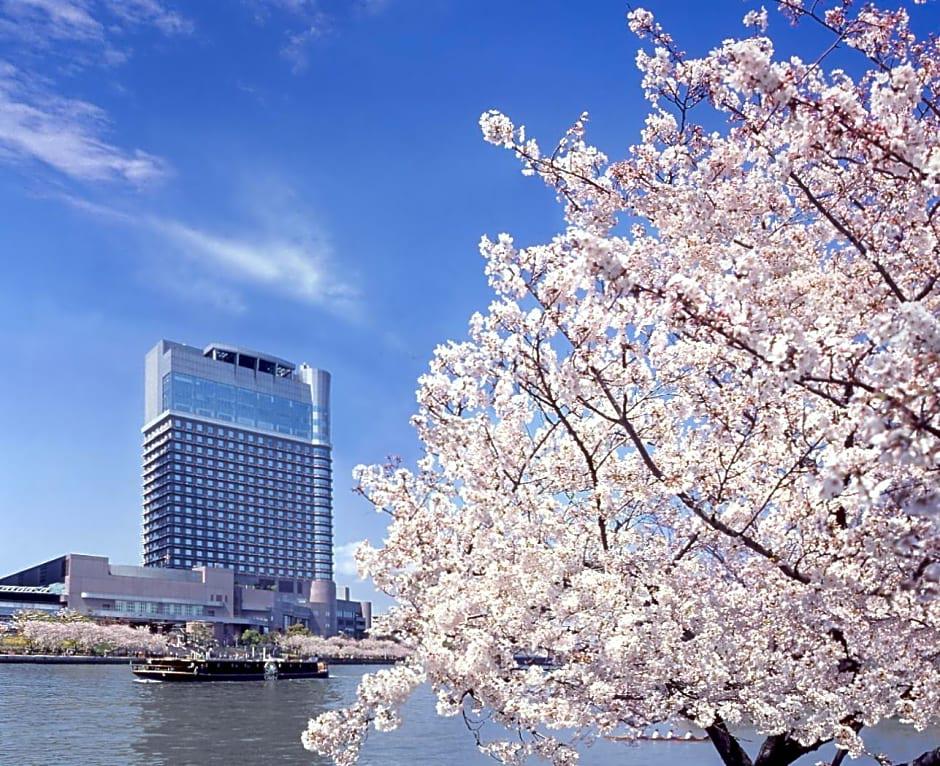
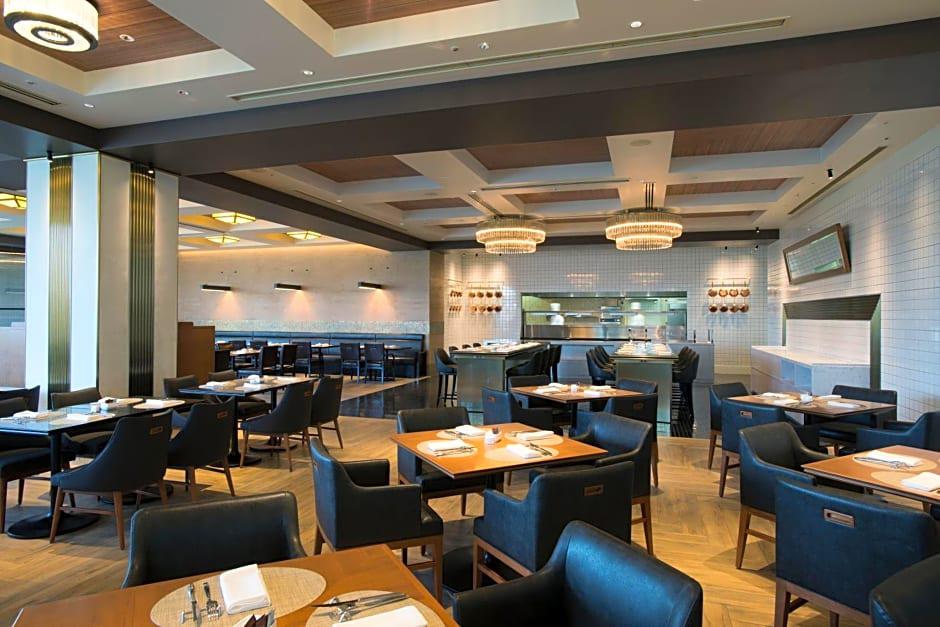
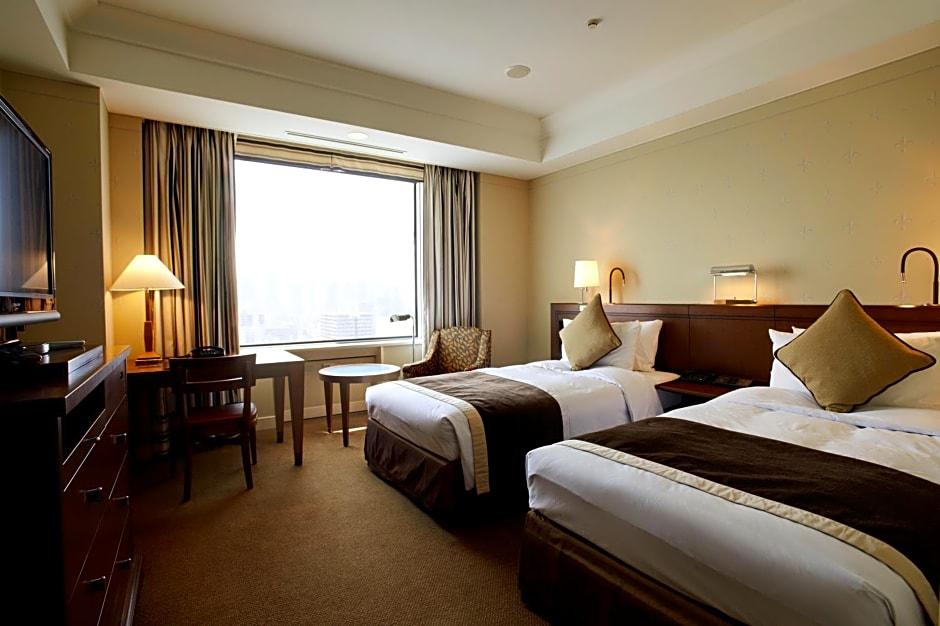
★Each person will receive a special gift – Kyoto's super popular souvenir – Ogurayama Villa Senbei Rice Cracker Cookies (excluding infants).
★ This itinerary includes complimentary audio guide headsets, offering you a high-quality and professional guided experience!! ★
*The provided audio guide devices are for rental use. In the event of loss or damage due to personal reasons of the traveler, compensation of NT$2000 per device is required, according to the manufacturer's regulations. Please be advised.
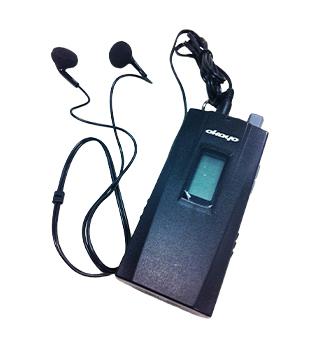
⚠️Notice
◆Travel Itinerary Notes◆
*This quotation does not include round-trip airfare to Japan.
*The minimum number of participants for this itinerary is 16 people or more.
*We use legally operated green-plate vehicles and provide professional, friendly, and attentive senior guides for your service.
*According to the latest regulations issued by the Ministry of Land, Infrastructure, Transport, and Tourism of Japan in June of Heisei 24 (2012), the daily driving time for buses should not exceed 10 hours (based on the actual departure time from the garage) to effectively prevent traffic conditions caused by driver fatigue. (Source: Ministry of Land, Infrastructure, Transport, and Tourism of Japan)
*Japanese hotels do not have an official star rating system. The displayed classification on this webpage is a general recognition in the travel market and is based on a comprehensive rating obtained by referencing information from several booking websites in Taiwan and Japan. Please note that different websites have different evaluation criteria and perspectives, making it challenging to use information from a single webpage as the final judgment.
*Transportation, accommodation, and tourist spots in this itinerary will adhere as much as possible to the original plan. However, in case of special circumstances such as boat availability, traffic congestion, closure of tourist attractions, adjustment of accommodation, seasonal changes, and hotel confirmation issues, or other uncontrollable factors, the itinerary sequence may be adjusted or tourist spots swapped. The arrangement will prioritize local conditions, and we appreciate your understanding.
*The set meals in the itinerary will be adjusted according to epidemic prevention measures.
*The dietary cultures between Taiwan and Japan vary. Most Japanese vegetarians can consume ingredients such as green onions, ginger, garlic, chili, and even dishes cooked with bonito or meat-based broth. To respect the dietary habits of vegetarian guests from Taiwan, and avoiding the use of the aforementioned ingredients, most restaurants will provide vegetarian guests with set meals or hot pot dishes that include various vegetables, tofu, and pickled dishes. As it is challenging to purchase completely vegetarian products locally, we recommend guests traveling to Japan to prepare vegetarian food in advance if necessary.
*Weekly Weather Forecast for the Kansai Region
◆Room Type Notes◆
- All hotel accommodations are based on double occupancy (two persons per room) to ensure the quality of your travel experience.
- If a single room is needed, a single room supplement of CAD 550 is required.
- For a single adult or an adult with an infant, please contact our business department to confirm additional charges.
- Japanese room types, except for traditional tatami rooms, generally feature either two small beds or one large bed. Requests for specific bed configurations cannot be guaranteed but may be accommodated based on availability; please check with our business department for any additional charges.
- For Japanese room types, triple rooms are rare and may include configurations such as:
- (A) One large bed + one rollaway bed or sofa bed
- (B) Two small beds + one rollaway bed or sofa bed
- (C) Japanese-Western style
- (D) One large bed + one small bed Requests for specific configurations in triple rooms cannot be guaranteed and are subject to availability on the day of check-in.
◆Note: Please provide information about triple room requirements during the deposit payment. If no specific requirement is provided, one guest may be assigned to share a room with another guest of the same gender. We appreciate your understanding! ◆
◆Friendly Reminder: [For Kansai/Shikoku/San'in-Sanyo Region~ Hotels stipulate that children aged 6 and above are considered adults and require a separate bed. We apologize for any inconvenience.]◆
Daily Itinerary
Group Departure Flight (Please arrange a flight that arrives at Osaka Kansai Airport before 11:10 am on the first day of the itinerary for easy rendezvous with the group. If your arrival time is later than this flight, please arrange your own transportation to meet the group.) Starlux Airlines JX820, Taoyuan Airport 07:40 ~ Osaka Kansai Airport 11:10 If you arrive in Osaka one day in advance, we recommend staying at a hotel near Osaka Kansai Airport that provides free airport shuttle service for your convenience in returning to the airport to meet the group. We can arrange reservations for a three-star hotel near Osaka Kansai Airport. The nightly rate for a double room is approximately CAD205 on weekdays (Sunday to Thursday check-in), and CAD275 on weekends (Friday to Saturday) and Japanese national holidays.
World Heritage Site [Nara Todai-ji Temple] [Indoor visit]
Located in Zoshicho, Nara City, Nara Prefecture, Todai-ji Temple is the head temple of the Kegon school of Buddhism and one of the Seven Great Temples of Nanto. With a history of over 1,200 years, it was designated as part of the "Historic Monuments of Ancient Nara" World Heritage Site in 1998. It played a significant role in the Buddhist activities of Nara-era Japan, established in the mid-8th century with the support of Emperor Shomu, and served as the central provincial temple among more than 60 provincial temples of that era. The main building, Daibutsuden, with a height of nearly 50 meters, is the largest existing wooden structure in the world.
Nara Deer Park [Visit after disembarking]
The location of Todai-ji Temple is also Nara Deer Park. The park is home to about 1,200 wild deer, considered messengers of the gods and cherished by people since ancient times. The deer here are not at all shy. The combination of the Great Buddha, greenery, and deer symbolizes the ancient capital of Nara.
★ Visit Michelin Three-Star Attraction - Kiyomizu-dera
Fushimi Inari Taisha [Indoor visit] According to historical records, Fushimi Inari Taisha was established in the year 711 and is the head shrine of the approximately 30,000 Inari shrines spread across Japan. It primarily enshrines the Inari deity, historically revered as a god of agriculture and commerce, blessing prosperity and abundant harvests in business. Located on Mount Inari, the shrine complex consists of a tower gate, main hall, and thousands of vermilion torii gates. A mysterious red tunnel, seemingly composed of thousands of vermilion torii gates, leads to the summit of Mount Inari, representing one of Kyoto's unique landscapes.
World Heritage Site [Kiyomizu-dera] [Indoor visit] Built in the year 778 on Mount Otowa in Higashiyama, Kyoto, Kiyomizu-dera primarily worships the deity Kannon. Not only listed as one of the World Heritage Sites, but the main hall is also designated as a national treasure in Japan. The iconic Kiyomizu Stage in front of the main hall is supported by 139 tall wooden pillars, without the use of a single nail, standing gracefully on a steep cliff. Surrounded by lush natural beauty, Kiyomizu-dera boasts a rich history and is one of Kyoto's most famous landmarks, alongside Kinkaku-ji and Arashiyama. Depending on the season, visitors can enjoy different scenic views. The temple hosts illumination events in spring and autumn, allowing people to appreciate the nighttime beauty of Kiyomizu-dera adorned with cherry blossoms or autumn foliage.
**Note: [Chotoku Shrine], located on the north side of the main hall of Kiyomizu-dera, is popular among young people for praying for good relationships. Visitors passing through the stage and the "marriage stone" are said to not only gain health and longevity but also form good relationships. As of August 19, 2022, Chotoku Shrine is closed for a three-year renovation.
Kyoto Yasaka Shrine [Visit after disembarking]
As the national Gion shrine, Yasaka Shrine played a crucial role in purification ceremonies before the capital moved to Heian. It is believed to be highly effective for exorcism, healing, and business prosperity. The west gate, painted in vivid red at the end of Shijo-dori, is an important site for the Gion Festival, one of Kyoto's three major festivals. The surrounding Gion area is filled with narrow alleys, where traditional tea houses and restaurants with unique facades stand side by side, creating a distinctive nightlife atmosphere.
Gion - Hanamikoji [Visit after disembarking]
The "Hanamikoji" in Gion is a mysterious north-south path in the Gion area, a sought-after nightlife destination throughout Japan's history. The stone-paved Hanamikoji features exquisite tea houses and restaurants, forming a scenic view along the Shirakawa River in Gion. You can fully enjoy the beauty of Kyoto during your stroll. Occasionally encountering young maiko (apprentice geisha) in high wooden clogs, walking gracefully with a sweet smile, adds to the charm of Hanamikoji.
World Heritage Site [Kinkaku-ji] [Indoor visit]
Kyoto's most iconic landmark, designated as a national treasure by the Japanese government. In 1994, it was also recognized as a UNESCO World Cultural Heritage site as part of the historic monuments of ancient Kyoto. Internationally, it is considered one of the three typical impressions of Japan, alongside Mount Fuji and geisha. The entire exterior of the temple is adorned with gold leaf, and a symbol of auspiciousness, the golden phoenix, decorates the top. Kinkaku-ji is an eternal symbol of Kyoto's spirit.
Arashiyama Togetsukyo Bridge [Visit after disembarking]
The most representative sightseeing spot in Kyoto, the "Arashiyama Togetsukyo Bridge," attracts visitors in all seasons - cherry blossoms in spring, lush greenery in summer, colorful foliage in autumn, and serene snow in winter. The Katsura River flows gracefully beneath the bridge, embellished with waterfowl, creating a scene reminiscent of a heavenly realm. Since the Heian period, Japanese nobles have considered this area as an outing destination for boating and water play. The surroundings of Togetsukyo Bridge are picturesque, with green mountains, red lanterns at traditional teahouses, and a constant stream of visitors. Along the river, you may encounter elegantly dressed geisha strolling, adding to the enchantment.
Arima Onsen Ancient Street Exploration [Visit after disembarking]
Located in the northern part of Kobe City, the Arima Onsen is one of Japan's three ancient hot springs and one of the three famous hot springs in Japan. It is often referred to as the "living room of Kansai." In the Warring States period of Japan, after the unification of the country by Toyotomi Hideyoshi, he visited Arima Onsen multiple times to heal war wounds and rejuvenate. Arima Onsen is known for its rich and continuous flow of hot spring water, a rare quality worldwide, making it a representative and genuine hot spring in Japan.
★ [Foot Bath Experience]
The hot spring street is full of historical charm, surrounded by the rich nature of Mount Rokko. The diverse expressions of the four seasons make Arima one of its charming points.
**Note: [Special Notice]
If the Arima Onsen foot bath undergoes equipment safety checks on the second and fourth Tuesdays of each month, there will be no foot bath experience, allowing more time for exploring the hot spring street.
MOSAIC Mosaic Square [Visit after disembarking]
Located in the famous Harbor Land area of Kobe, "MOSAIC Mosaic Square" is dubbed the "Kansai Odaiba." The distinctive wooden houses and red brick buildings on one side, surrounded by plants and a flowing stream with small bridges, create a perfect harmony with the sea harbor view. On the seaside, there are large terraces, providing an excellent location for enjoying the harbor night view. Various shops, including dining, clothing, groceries, and accessories, make it a place where visitors can linger. As night falls, the dazzling lights of the Ferris wheel create a brilliant display, embellishing Kobe Harbor like a sparkling pearl. Kobe is a prosperous international port and metropolis, with Kobe night views being particularly dazzling.
★ Visit Michelin Three-Star Attraction ~ Himeji Castle
World Heritage Site [Himeji Castle] [Indoor visit]
Located in Himeji City, Hyogo Prefecture, the World Heritage Site [Himeji Castle] with its white walls and winding roof design resembles a white heron spreading its wings, hence the nickname "White Heron Castle." Construction of the fortress in Himeji began in 1333 by Akamatsu Sadanori and underwent expansions by several castle lords, including Toyotomi Hideyoshi, over the years. It was finally completed in its present form in 1601 by Ikeda Terumasa, the lord of the western provinces and son-in-law of Tokugawa Ieyasu. Despite numerous wars, Himeji Castle has miraculously survived over four centuries and is praised as the "Japan's First Castle" for its high degree of preservation.
Himeji Castle West Oyashiki Site Garden "Koko-en" [Indoor visit]
The garden is built on the site of the west residence and samurai residence of Himeji Castle, recognized as a national treasure alongside the World Heritage Himeji Castle. Established to commemorate the 100th anniversary of Himeji City, the garden is a pond-style Japanese garden composed of multiple gardens with a total area of about 10,000 square meters. It showcases distinct appearances throughout the four seasons.
Osaka Duty-Free Shop [Indoor visit] [Duty-Free Shop] (Approximately one hour stay)
The shop displays a variety of goods, providing an array of choices for gifts and souvenirs. Take this opportunity to explore and purchase items of your liking.
Namba ~ Shinsaibashi ~ Ebisubashi Shopping Street ~ Dotonbori [Visit after disembarking] 【Shinsaibashi, Ebisubashi Shopping Street ~ Dotonbori‧Traditional Gourmet Street】
Located between Ebisubashi and Dotombori Bridge, the neon lights change from red, blue, orange to dark red, representing a day in Dotonbori. At night, the colorful neon lights reflect on the river, and people on the bridge compete to find the best angle for photography. Visit the lively and famous Shinsaibashi Shopping Street, a seemingly endless street filled with youthful energy. Rain or shine, the transparent canopies provide a comfortable shopping experience. Enjoy the vibrant atmosphere of Osaka city with diverse offerings, including Osaka-style okonomiyaki, takoyaki, Ichiran Ramen, Kinryu Ramen, 0101, H&M, ZARA, UNIQLO, Takashimaya, Daimaru Department Store, and many more.
Group return flight (Please arrange the itinerary for the afternoon of the fifth day, departing from Osaka Kansai Airport after 12:20.) Starlux Airlines JX821 Osaka Kansai Airport 12:20 ~ Taoyuan Airport 14:35
Notice
•• Traveling Abroad Epidemic Safety ••
- Starting from March 20, 2023, the Taiwan Centers for Disease Control has lifted mandatory quarantine for COVID-19 mild cases (https://reurl.cc/eD5pmK). Travelers are advised to carefully assess their health condition before joining the tour if they experience any discomfort.
- Starting from May 31, 2023, except for medical facilities where masks are required throughout, individuals are free to decide whether to wear masks in other places (https://reurl.cc/r5l0Q4). Travelers are recommended to carry masks if needed.
- Our company adheres to the regulations, including travel industry liability insurance and compliance with relevant measures and domestic epidemic regulations set by the Tourism Bureau of the Ministry of Transportation.
- Outbound travelers are advised to consider purchasing overseas medical insurance and other related insurances to cover potential expenses related to infections.
- If a traveler exhibits symptoms during the trip and voluntarily informs us of a confirmed diagnosis, our company will comply with the local epidemic measures. If unable to comply with local measures, please refrain from joining the tour.
- Our company will assist in confirming arrangements with restaurants, accommodations, sightseeing activities, and transportation services, ensuring compliance with the epidemic control measures of the destination country. ※ For more information on travel medicine, please refer to the website of the Centers for Disease Control https://www.cdc.gov.tw in the "International Travel and Health" section, or call the epidemic hotline at 1922 (for overseas calls, dial +886-800-001922).
Activity Notes:
- If you have mobility issues, chronic illnesses, or are aged 70 and above, please inform us proactively. In consideration of the safety and smoothness of the travel itinerary for the passengers, and to respect the tour rights of other group members, guests with mobility issues must travel with family or friends who can independently care for them. Acceptance is subject to evaluation by the company.
※ If you inform us of mobility issues after paying the deposit, necessary fees may be charged. We appreciate your understanding. - The dietary culture between Taiwan and Japan varies significantly. We respect the dietary habits of vegetarian guests from Taiwan. Many restaurants provide set meals or hot pots for vegetarian guests, consisting mainly of vegetables, tofu, and pickled dishes. Japanese vegetarians may consume green onions, ginger, garlic, chili, eggs, and dairy. The soup base is often made with bonito or dashi broth.
※ As it is challenging to find vegetarian products locally, we recommend that guests traveling to Japan prepare vegetarian food in advance if needed. Due to the strict cooking restrictions in Japanese restaurants, it may be difficult to accommodate last-minute changes. If you have dietary restrictions due to religious or allergic reasons (vegetarian, no beef, pork, raw fish, allergy to shellfish, eggs, dairy, etc.), please inform our business representative at the time of registration, and we will make adjustments as much as possible. Other personal dietary preferences, due to limited restaurant choices, may not be adjustable.
Safety Guidelines:
~ For your safety during this trip, we kindly ask you to adhere to the following rules. This is our responsibility to inform you and to safeguard your interests. ~
◆ Friendly Reminders ◆
- When aboard an airplane, please fasten your seatbelt at all times to prevent turbulence from affecting your safety.
- Valuables should be stored in the hotel safe. If carried with you, do not leave them unattended, and be cautious of pickpockets.
- When staying in a hotel, always lock your room door for safety. Do not hang clothes on lights, smoke in bed, and in case of a fire alarm, quickly exit through the emergency exit.
- Do not swim in the pool when it is not open, and never swim alone.
- When on a boat, always wear a life jacket.
- When on a fast boat, hold onto the handrail or sit securely, and do not move arbitrarily.
- When playing in the sea, do not go beyond the safety warning line.
- In hot spring baths, do not wear clothes or swimsuits. Before entering the pool, clean yourself outside the pool. Please note that it is recommended to soak in the hot spring for about 15 minutes, and always accompany a partner.
- When taking a car, do not change seats arbitrarily, and do not extend your head or hands out of the window. Be cautious while getting on and off to avoid danger from oncoming vehicles.
- When taking a cable car, board and alight in sequence, and follow the instructions of the staff.
- In group activities, if you need to leave during the journey, you must obtain the consent of the tour leader to avoid accidents.
- If you need to go out on your own during nighttime or free activity time, please inform the tour leader or fellow travelers, and pay special attention to safety.
- Be cautious when walking on snowy and steep roads.
- Time difference: Japan is one hour ahead of Taiwan.
- Toothpaste, toothbrushes, and slippers are provided in Japanese hotels. Japanese-style yukata is also available for changing.
- Tap water in Japan is drinkable when cold, but hot water needs to be boiled before consumption using an electric kettle.
- Guests are responsible for carrying their luggage to their rooms in Japan.
- Do not flaunt wealth in public places, and avoid counting money in public when shopping.
- Follow the guidelines announced by the tour leader at various locations such as tourist attractions, restaurants, hotels, and amusement facilities.
- When shopping in regular stores in Japan, an additional 10% consumption tax applies. For purchases exceeding JPY 5000 at department stores, you can present your passport, register, and fill out a form to enjoy a 10% tax exemption. Note that not all department stores apply this, and the procedure may be complicated.
- There are certain restrictions and rules for bathing in hot springs. To bathe healthily and beautifully without disrespecting the Japanese, here are some hot spring tips:
● Do not bathe on an empty stomach, after drinking alcohol, or immediately after meals.
● Bathing should be done completely naked, and wearing swimwear or wrapping a towel around is not allowed as it may damage the quality of the hot spring water.
● Before bathing, clean your body first. Hot spring facilities usually have shower facilities. The alkalinity of hot springs is quite strong, and some guests may feel discomfort due to their physique.
● Pregnant women, those with heart problems, skin diseases, or wounds on the skin should not bathe. After intense exercise or staying up late, do not suddenly bathe, as it may cause shock.
● For those who do not often bathe in hot springs, it is best to soak in a temperature below 41 degrees Celsius, as higher temperatures may cause discomfort. To avoid the risk of sudden immersion in hot springs causing cerebral ischemia, wet your head or body with hot water before soaking.
● The recommended bathing time is limited to 15 minutes to avoid the loss of skin moisture and oil. If you feel uncomfortable, quickly get up and cool off with cold water.
● After bathing, it is best to let your body dry naturally without using a towel to wipe it, to retain the hot spring components on the skin.
● People with tattoos cannot enter large bathhouses.
◆ International Travel Epidemic Safety ◆ - Before traveling abroad, check international epidemic information and prevention suggestions on the Centers for Disease Control and Prevention (CDC) global website, or visit a "Travel Medicine Clinic" for evaluation 4 to 6 weeks before departure.
- If you have had symptoms such as fever, diarrhea, rash, or respiratory discomfort during your journey or upon returning home, please inform airport quarantine personnel upon entry. Within 21 days after returning home, if you feel unwell, seek medical attention promptly, and inform the doctor of your travel and contact history.
- Preventive measures for infectious diseases:
● Wash hands frequently with soap, eat cooked food, and drink bottled water.
● Wear a mask if you have respiratory symptoms.
● Spray insect repellent to avoid mosquito bites.
● Avoid contact with birds, dogs, cats, and wild animals.
For more travel medicine-related information, please refer to the CDC global website at https://www.cdc.gov.tw, under the "International Travel and Health" section, or call the epidemic prevention hotline 1922 (for overseas calls,
Tipping:
- Japanese tour guides, leaders, and drivers receive a daily tip of NT$300 (special tour types may have different arrangements).
- Okinawa tour guides, leaders, and drivers receive a daily tip of NT$300 (special tour types may have different arrangements).
- Tips are not required for hotel staff. Snacks on the room's bar counter, small bottles of liquor, and beverages can be self-registered and settled at the front desk. However, tea bags are provided free of charge.
★Cancellation Policy★
If Travel Agent can prove that the actual damage exceeds the standard in the first item, it may request compensation for its actual damage."
Please note that some parts of the translation may have been modified for clarity and coherence.

